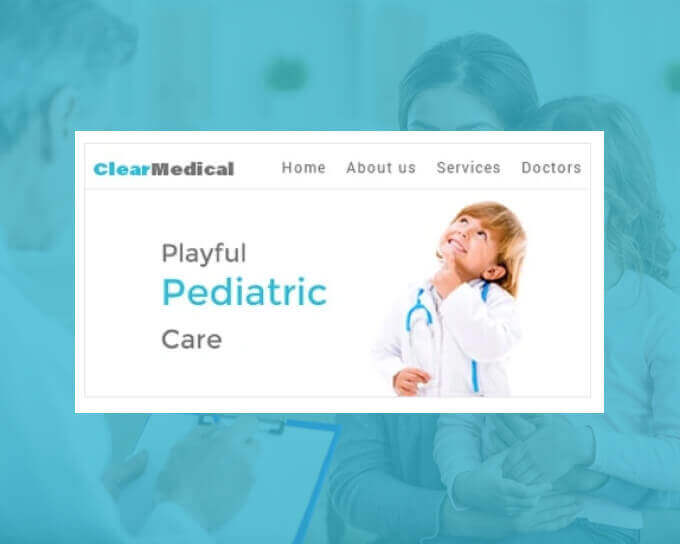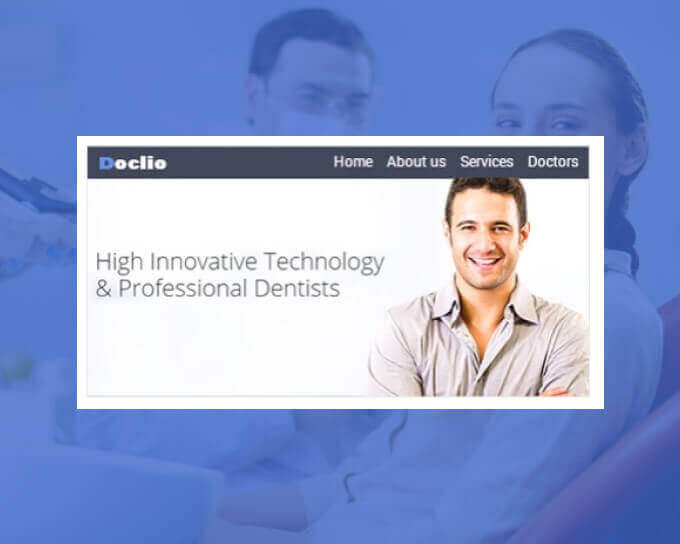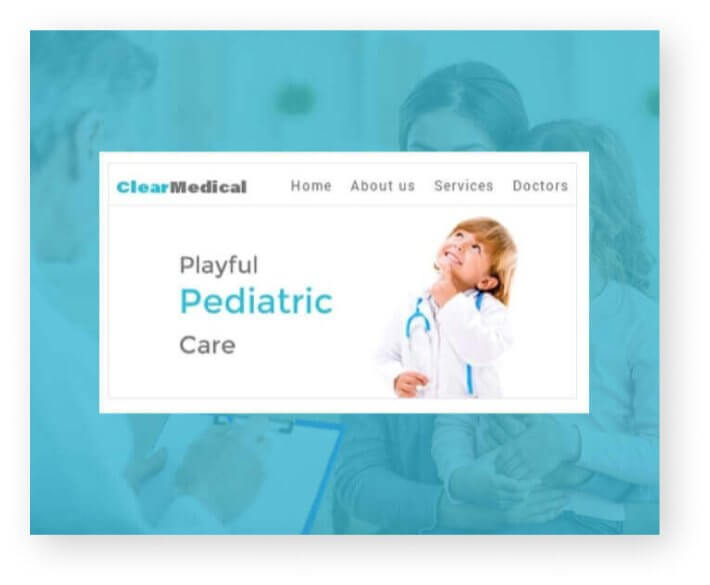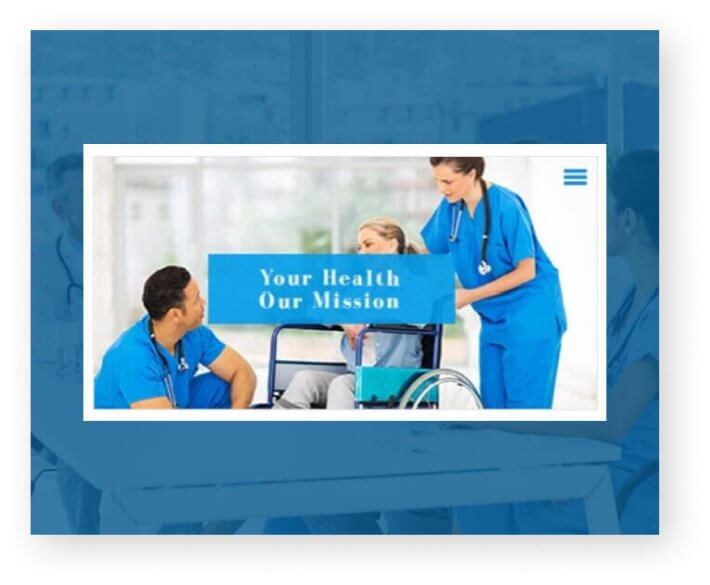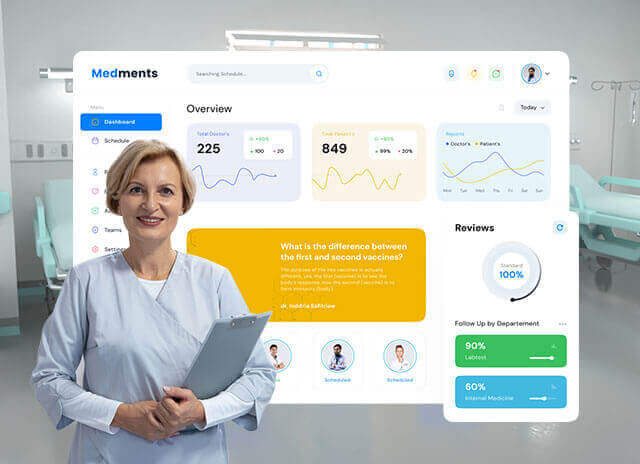
Hospital Management System Manage Your Hospital Seamlessly with our Custom Hospital Management Software. Inspire Care, Transcend Boundaries and Transform hospital operations with us
Request Free ConsultationExplore Our Achievements
-
10 B+
Client Revenues -
12+
Successful Years -
1000+
IT Ninjas -
5000+
Projects
Custom Hospital Management Software
In a fast-changing business landscape, the need for automating and streamlining processes has become more important than ever before. The healthcare industry is no different. In fact, the use of technology in this sector has lagged behind other industries for years. But that's beginning to change, as more and more hospitals and clinics are adopting custom hospital management software (HMIS).
An HMIS can help your facility manage everything from patient records and appointments to financial data and human resources. By automating many of the tasks that are typically done manually, an HMIS can free up staff members to focus on providing quality patient care. In addition, an HMIS can help you improve communication between departments, reduce errors, and make better decisions about how to allocate resources.
There are many different types of hospital management software available on the market today. So how do you choose the right one for your facility? Here are a few factors to consider:
1. Scalability: As your hospital or clinic grows, you'll need a system that can grow with you. Make sure the HMIS you select can be easily expanded to accommodate additional users, facilities, or locations.
2. Integration: A good HMIS will integrate with other systems already in place at your facility, such as your electronic medical record (EMR) system or financial software. This will save time and eliminate duplicate data entry.
3. Support: When choosing an HMIS vendor, be sure to ask about their customer support options. You should have access to someone who can answer questions or resolve technical issues quickly and easily.. Ensure that adequate training is provided so that all staff members know how to use the system properly.
4. Customization: One size does not fit all when it comes to hospital management software.. Some vendors offer off-the-shelf solutions while others specialize in customizing their software to meet the specific needs of their clients. If you have unique requirements, make sure the vendor you select is willing and able to accommodate them.
5. Implementation: Implementing a new HMIS is a major undertaking. Be sure to partner with a vendor who has experience successfully implementing similar systems within healthcare organizations. They should provide detailed project plans outlining each step of the process as well as timelines for completion. They should also offer ongoing support during and after implementation to ensure a smooth transition period.
CIS sustains an experience in providing a contemporary, scalable platform for hospitals, clinics, and their branches to deliver improved patient care to achieve operational efficiency and maximizing profits.
Why is a Custom HMS Important for a Hospital?
A Hospital Management System (HMS) is a computer or web-based application that facilitates and integrates all the internal processes of a hospital. It enables the staff to work more efficiently and provides accurate information to the management for informed decision making.
The main purpose of HMS is to streamline the functioning of various departments in a hospital so that patient care is not compromised due to lack of coordination between departments.
An efficient HMS will have modules for patient registration, appointment scheduling, laboratory test results, radiology images, pharmacy order entry, billing and accounts receivable. Some systems also have a module for inventory management.
A good quality HMS should be able to interface with other systems such as Laboratory Information System (LIS), Radiology Information System (RIS) and Electronic Medical Record (EMR) system. This allows for seamless exchange of information between different departments and reduces duplication of effort.
Customization is an important feature of any HMS because each hospital has its own unique way of working. A one-size-fits-all approach does not work in the case of hospital management software - what works well for one hospital may not be suitable for another.
Some hospitals may require additional features not present in off-the-shelf software. In such cases, it is necessary to get the software customized according to the specific requirements of the hospital.
Another reason why custom HMS is important for hospitals is that it helps them keep pace with changing technology landscape. As new technologies are developed, they can be incorporated into the existing system without having to replace the entire system. This saves time and money in the long run.
Why choosing CIS Custom Hospital Management Systems?
CIS's Hospital management System (HMS) and Hospital Information System (HIS) is a modern alternative that allows medical facilities to conquer the biggest challenges in healthcare. Today these challenges include achieving operational effectiveness, managing the healthcare provider community's adoption of electronic medical record (EMR) technology, delivering superior patient care while boosting revenues with new offerings and services.
Secure Hospital Management and Patients Management System
The hospital information system solutions by CIS are web-native, incorporated, multi-facility, multi-lingual, and scalable systems. The HIS developed by CIS aims at delivering a comprehensive solution to any healthcare body to increase its effectiveness and return on investment. Our HIS can be configured to meet communication needs and the information requirements of clinical sections from small to large hospitals. Therefore, it can be customized as per the administrative, revenue, operational, and clinical departments' demands of the healthcare body.
Solution Highlights
-

Extended Care Platform
Add new efficient services to increase care and revenues
An extended patient care software platform is a system that helps to monitor and manage the health of patients beyond the traditional hospital setting. It allows for remote monitoring of patients, as well as providing them with access to their own health data and records. The aim of an extended patient care software platform is to improve the quality of life for patients by providing them with more control over their own health. In addition, it can also help to reduce the cost of healthcare by reducing the need for hospital visits and overnight stays.
There are a number of different extended patient care software platforms available on the market, each with its own unique features and benefits. However, all platforms share some common features, such as the ability to track vital signs, monitor medication adherence, and provide reminders for appointments and tasks. Some platforms also offer additional features, such as the ability to book appointments online or through a mobile app, track fitness levels, or connect with social media networks.
When choosing an extended patient care software platform, it is important to consider the needs of your specific patient population. For example, if you are primarily interested in tracking vital signs, then you will need a platform that offers this functionality. If you are more concerned with managing medication adherence or connecting with social media networks, then you may want to choose a different platform. It is also important to consider the price of the platform before making your final decision. Such Platforms are quite expensive depending on the features they offer. Our Custom HMS System helps you navigate many of such challenges.
-

Modern & Advanced Offerings
From small to very large network hospitals, our HIS can fit healthcare enterprises of all sizes.
A hospital is a place where patients are admitted and given medical treatment. A hospital management software (HMS) is a computerized system that helps in the efficient running of a hospital by keeping track of all its activities. It is also known as a hospital information system (HIS).
The main aim of using such a system is to streamline the working of the hospital so that it can provide better services to its patients.
A typical HMS would include modules for patient registration, outpatient records, inpatient records, laboratory test results, radiology images, pharmacy orders, operating room scheduling, and bed management. Some systems also have additional modules for billing and accounts receivable, insurance claims processing, human resources management, and asset management.
There are many vendors who offer HMS solutions. While our Custom HMS System helps you get all the desired features for your patients care needs.
-

Adheres to Global Standards
We integrate modern solutions and strictly assent with global standards
A hospital is a place where patients receive medical care and treatment. Hospitals are usually staffed by doctors, nurses, and other health care professionals. Hospital management software is a computer program that helps hospitals to manage their operations. This type of software can help hospitals to track patient records, schedule appointments, and billing information.
There are many different types of hospital management software available on the market today. Some of these programs are designed for specific types of hospitals, such as small rural hospitals or large urban hospitals. Others are designed to be used by all types of hospitals.
Hospital management software can be very expensive, so it is important to choose a program that will meet the needs of your hospital. You should also consider the training and support that is available for the software you select.
The first step in choosing hospital management software is to determine what your hospital's needs are. Do you need a program that can handle scheduling? Do you need one that can track patient records? What about billing information? Once you know what your needs are, you can begin to narrow down your choices.
There are many different companies that offer hospital management software. Some of the more popular companies include McKesson Corporation, Cerner Corporation, and Epic Systems Corporation. These companies offer a variety of different products designed to meet the needs of different types of hospitals.
When choosing hospital management software, it is important to select a product that will work well with your existing computer systems. Many times, new software will not work well with older systems and this can cause problems within your hospital. Make sure to check with your IT department before making any final decisions about which product to purchase
Our Custom HMS System helps you get all the desired features for your patients care needs.
-

Streamlined User Experience
Refined user experience for Elevated adoption and sleek processes
A streamlined user experience is crucial for any software used in hospital management. It can help staff work more efficiently and reduce the amount of time spent on tasks that are not medically related. In this article, we will explore some ways to create a streamlined user experience in hospital management software.
One way to streamline the user experience is by reducing the number of clicks required to complete a task. This can be done by designing the software so that common tasks can be completed with fewer clicks. For example, if a nurse needs to view a patient's records, the software should allow her to do so with just a few clicks. Similarly, if a doctor needs to order medication for a patient, the process should be as simple as possible.
Another way to streamline the user experience is by providing users with clear instructions on how to complete tasks. The software should provide step-by-step instructions that are easy to follow. Additionally, there should be video tutorials or other forms of training available so that users can learn how to use the software effectively.
Finally, it is important to ensure that hospital management software is designed for ease of use. The interface should be intuitive and easy to navigate. Additionally, the software should be compatible with commonly used applications such as Microsoft Office and Google Docs so that staff can access their files from anywhere.
-

Low Total Cost of Ownership
Economy solution; an investment that is comparable to the best in the market at lower
The healthcare industry is under constant pressure to do more with less. In order to survive and thrive in this environment, hospitals need to find ways to increase efficiency and cut costs. One way to accomplish this is by investing in hospital management software that has a low total cost of ownership (TCO).
There are many factors that contribute to the TCO of hospital management software. The most important factor is the initial price of the software. But other factors, such as support costs, training costs, and upgrade costs, can also add up over time and impact the overall TCO.
When considering hospital management software, it's important to look at the big picture and consider all of the potential costs associated with each option. By doing so, you can make an informed decision about which solution will offer the best value over the long run.
What is Total Cost of Ownership?
Total cost of ownership (TCO) is a metric that measures all of the direct and indirect costs associated with owning and operating a particular product or system over its lifetime. When applied to hospital management software, TCO includes both one-time costs (e.g., license fees) and recurring costs (e.g., support fees). It also takes into account hidden costs that are often overlooked when making purchasing decisions (e.g., training expenses).
By taking all of these factors into account, TCO provides a more accurate picture of the true cost of ownership than simply looking at initial price tags. And when applied correctly, it can be a valuable tool for comparing different hospital management software options and selecting the most cost-effective solution for your needs.
How Is TCO Calculated? To calculate TCO, you first need to identify all of the direct and indirect costs associated with using a particular hospital management software solution over its lifetime. This includes one-time purchase prices as well as ongoing support/maintenance fees, upgrade/customization expenses, user training expenditures, etc… Once all relevant cost data has been gathered, you can then begin calculating your organization's specific TCO using one or more of the methods described below:
1) Basic calculation - This approach simply adds up all relevant past and future cost categories (i.e., license fees + support fees + training expenses + customization charges) to arrive at a single "grand total" figure for each individual hospital management software solution being considered . While easy to understand and use , this method does not take into account important variables like inflation or interest rates , which can have a significant impact on long-term TCO . As such , it should only be used as a starting point when comparing different solutions .
2) Net present value calculation - More sophisticated than the basic method , this technique accounts for inflation by discounting future cash flows back to their present value equivalents . In addition , it also takes into account differences in interest rates between various investment options , allowing you to compare apples-to - apples on a level playing field . To calculate NPV , you first need to determine your organization's "discount rate " - i . e . , what rate of return would be required on an alternative investment in order for it match up against our current project under consideration ? Once we have our discount rate figured out , we then go through each year's worth cash flows associated with our project & multiply them by a corresponding "present value factor " ; summing up these products gives us our final NPV figure . If this number is positive , it means that our project presents an attractive investment opportunity ; if negative , it indicates that there are better places for our money elsewhere
3 ) Internal rate return calculation - Similar in conceptually net present value analysis described above , internal rate return attempts answer same basic question : what kindof return would we earn if we invested in this project ? However instead finding just one number like NPV did IRR calculates series points where projects cash inflows equal outflows & interpolates between these break even points until desired result found This procedure usually done using computer programs since manual calculations quite tedious process 4 ) Payback period calculation - Another popularly used metric payback period looks how long will take recoup original investments made project After determining projects cash inflows each year cumulate these until they reach exceed amount initially spent At point reached divide original investment total by annual cash flow find break even years needed get money back 5 Comparing Different Software Solutions Using Their Respective TCOS Now let's say hypothetically speaking had two different types software front end selection process After going through requirements gathering exercise determined needed functionality could either provided off shelf product A or custom developed product B But wasn't sure which route go down next wanted know really which option presented better financial proposition decided turn TCO analysis Selecting right type first place As mentioned before main thing keep mind while doing any sort comparison ensure level playing field exists In case want make valid assessment should only compare products similar features being offered For example wouldn't want try compare enterprise resource planning ERP system CRM because former much complex latter Even within same category though certain exist may come packaged together while some require separate purchase Also some providers charge monthly fee subscription basis while others require payment lump sum upfront Furthermore cloud based solutions incur additional operational expenditure OPEX incurred due hosting maintenance provisions must kept These few examples serve highlight importance creating fair comparison before actually going ahead carrying out detailed analysis With regards matter hand though both A B appeared provide roughly equivalent functionality from high level perspective closer inspection revealed slight difference terms licensing model whereas came standard perpetual license B required users sign yearly contract Based observations decided run full scale study see how respective TCOS compared performing following steps 1 Gathered list itemized breakdown expected cost components including items licenses support maintenance upgrades user trainings2 Estimated staff time needed implement manage maintain system3 Projected usage levels application 4 Made assumptions regarding company growth trends forecast market conditions affecting demand 5 Applied standard formulas generate TOC results 6 Results were tabulated plotted graph form visual aid Below image depicts outcome comparative analysis As depicted above after taking everything into consideration turns out Product A little cheaper own operate Product B especially in the near term However once five year mark hits becomes clear starts become expensive hold onto So although initially may seem like good deal longer think about it might not such wise idea purchase What Should You Do When Evaluating Hospital Management Software Options? Use calculate total ownership cost Compare apples oranges Make sure include one time recurring Support Training Upgrades Customizations License Fees Maintenance Fees Hosting Fees User Fees Etcetera Determine investment objectives Consider short medium long Uncover constraints limitations ROI Requirements Timeline Budget Staff Skills Level Experience Training Available Time Other Project Priorities Risk Appetite Security Issues Compliance Legal Regulations Governance Etcetera Look at the big picture Not just today but into the future too How will things change Will needs grow shrink What about externalities New technologies Emerging markets Political instability Economic recession Pandemic Infrastructure improvements Advances medicine Technology singularity AI ML Blockchain Cloud Edge Computing Cybersecurity Etcetera Weigh pros and cons Decide if tradeoffs worthwhile Create business case Justify recommended course action Take action Purchase implement chosen hospital management software
Extended Care Ecosystem
Extended Care
Ecosystem
Range of innovative features for Hospital Management System
Integrated CRM makes it easy to access patient data and generates various records. This includes classification based on age, gender, demographic, and so forth. It's especially useful at the ambulatory level, which enhances continuity of care.

Range of innovative features for Hospital Management System
This feature allows you to communicate with your patients immediately after their discharge and provide them with the fast care they require. This feature also enables you to connect with others who want to make a difference in their lives and their communities.

Range of innovative features for Hospital Management System
A patient can book an appointment online with a doctor in just a few clicks. This digital platform offers a variety of specialists, regardless of whether a patient has a dry cough or a viral fever. Patients can easily reach out to any specialist, from a urologist or dentist.

Range of innovative features for Hospital Management System
Any department with authority to log in can view all data related to the patient and doctor. It keeps track of all frequently used medications and other materials in the pharmacy, as well as the material inventory.

How will it Impact your Business?
-

More Reliable Revenue Management
Improve financial performance and reduce administration
-

Optimizing Resource Management
Empowers your staff by streamlining administrative and clinical tasks with automated process management
-

Practice New Business Models
Create new streams of revenue through CIS's integrated solution suite for healthcare
-

More Prominent Visibility
Use Business Intelligence (BI) tools for statistical analysis and get a better understanding of enterprise requirements
-

Reliable Plan, Informed Decisions
Presents insight into the work structure, processes and flows from the Company environment
-

Greater Data Security
Achieve greater data security by leveraging access-controlled systems and role-based access.
Gaining Profits
With Hospital Information Systems at work, you can gain the skills to generate revenues from new business lines. Following are just a few such sectors to tap with HIS:
-


TeleHealth Support Service
Telehealth services are the use of electronic information and telecommunications technologies to support long-distance clinical health care, patient and professional health-related education, public health and health administration. Technologies include videoconferencing, the internet, store-and-forward imaging, streaming media, and terrestrial and wireless communications.
A recent study found that telehealth could potentially save the U.S. healthcare system $23 billion annually by 2025. The study also found that patients who used telehealth services had lower readmission rates than those who didn't use them.
There are a number of reasons why telehealth is becoming more popular. One reason is that it can help improve access to care for patients in rural or remote areas who might not otherwise have access to specialists or other forms of care. Another reason is that it can help reduce costs associated with travel for both patients and providers. Additionally, telehealth can help provider organizations improve their efficiency and productivity by reducing the need for face-to-face visits and freeing up staff time.
-


Long Term care
In the United States, long-term care (LTC) is a type of assistance provided to people who have chronic illnesses or disabilities. LTC services can be provided at home, in the community, or in nursing homes or other institutions.
LTC services help people with activities of daily living (ADLs), such as bathing, dressing, and using the toilet. They also help with instrumental activities of daily living (IADLs), such as preparing meals, shopping for groceries, and managing finances. Some people require only basic assistance with ADLs; others need more complex help with IADLs and medical care.
There are several types of LTC services available, including:
Home health care: Home health aides provide basic personal care and homemaking services in the home. Skilled nurses may also be involved to provide more complex medical care. Services are typically ordered by a physician and paid for by Medicare, Medicaid, private insurance, or out-of-pocket.
Adult day care: These programs provide social and recreational activities during the day in a safe environment for adults who cannot be left alone during the day. Services may include transportation, meals, personal care, and health monitoring. Adult day cares are typically open Monday through Friday during daytime hours. Fees vary depending on the program but may be covered by Medicaid or private insurance plans.
Respite Care: This type of short-term care is designed to give caregivers a break from their caring responsibilities. It can be provided in the home by a visiting nurse or homemaker/home health aide service, or in an adult daycare center or senior center that offers respite services
-


Home care
Today, home healthcare is a rapidly growing industry. This is due, in part, to the fact that our population is aging. More and more seniors are choosing to age at home rather than in a nursing facility or other type of long-term care setting.
Home healthcare can be defined as any type of health care or supportive services that are provided in the patient's home. Home healthcare services can be provided by a variety of different professionals, including nurses, occupational therapists, physical therapists, speech therapists, and social workers. In addition to traditional medical services, home healthcare providers may also offer assistance with activities of daily living such as bathing, dressing, and eating.
The benefits of receiving home healthcare are numerous. First and foremost, patients who receive home healthcare tend to have better health outcomes than those who do not. Studies have shown that patients who receive home healthcare are less likely to be readmitted to the hospital after being discharged and they also have shorter hospital stays when they are admitted for treatment. In addition to improved health outcomes, patients who receive home healthcare also report higher levels of satisfaction with their care. They often feel more comfortable and independent when receiving care in their own homes rather than in a hospital or nursing facility setting.
If you or your loved one is considering home healthcare as an option for health care needs, it is important to choose a provider that is right for you. There are many different types of providers out there - from small private practices to large corporations - so it's important that you take the time to find one that you feel comfortable with and that has a good reputation in the community. When interviewing potential providers, be sure to ask about their experience caring for patients with your specific condition or illness. You should also inquire about what types of services they offer and whether they accept your insurance coverage. By taking the time to choose the right provider from the start, you can ensure that you or your loved one will receive the best possible care at home
-


Patient Monitoring Service
A patient monitoring service is a healthcare service that helps individuals keep track of their health status and manage their health care. Patient monitoring services can be used to monitor vital signs, track medications, and provide education and support to patients.
-


CRM/patient portal
Patient portals and patient CRM systems are similar in that they both provide a way for patients to interact with their healthcare providers online. However, there are some key differences between the two types of systems.
A patient portal is a secure website that patients can log into to view their health information, schedule appointments, and message their care team. Patient portals are typically offered by hospitals or clinics as a way to improve communication and transparency between patients and providers.
A patient CRM system is a software application that helps healthcare organizations manage their relationships with patients. Patient CRMs often include features such as appointment scheduling, billing and payments, customer service, and marketing. Unlike patient portals, which are typically offered by individual healthcare organizations, patient CRMs are usually provided by third-party companies.
-


Referral management
In healthcare, a patient referral is the transfer of responsibility for care of a patient from one provider or group of providers to another. Referrals are made when a primary care provider (PCP) determines that the patient would benefit from seeing a specialist or other type of healthcare provider. The specialist or other provider then becomes responsible for providing care to the patient and communicating with the PCP about the plan of care.
Patient referrals are an important part of the healthcare system because they ensure that patients receive the most appropriate level of care for their needs. When referrals are made in a timely manner, patients can get the care they need before their condition gets worse. Referrals also help to keep specialists up-to-date on new treatments and procedures that may benefit their patients.
The process of making a referral can vary depending on the healthcare system, but it typically involves the following steps:
1. The PCP identifies that the patient would benefit from seeing a specialist or other type of healthcare provider.
2. The PCP contacts the specialist or other provider to discuss the case and request an appointment for the patient.
3. The specialist or other provider reviews information about the patient and decides whether to accept the referral.
4. If accepted, an appointment is scheduled and both providers coordinate to ensure that all necessary information is shared prior to the appointment.
5 After meeting with the specialist or other provider, both providers communicate about any changes to treatment plans and follow-up appointments as needed.




































